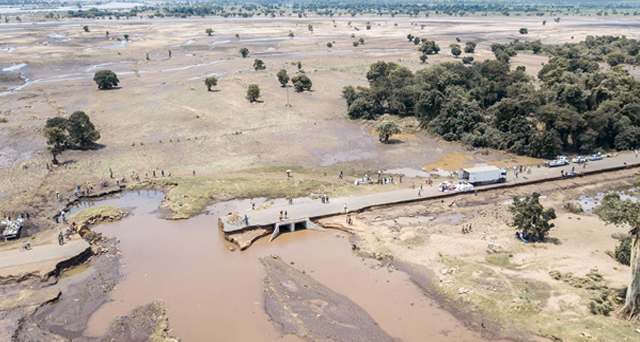Malawi's Climate in 2022: A Year of Extremes and Lessons for the Future
In a comprehensive analysis of the climate conditions of 2022, the Department of Climate Change and Meteorological Services (DCCMS) under the Ministry of Natural Resources and Climate Change has released the "State of Malawi Climate in 2022" report. The document meticulously details the climate patterns and extreme weather events that have left a significant mark on the nation over the year.

According to the report, Malawi was not spared from the brunt of climate variability, experiencing a series of extreme weather phenomena ranging from tropical cyclones, heavy rainfall, and flooding to dry spells, droughts, heatwaves, and strong winds. These events underscore the unpredictable nature of Malawi’s climate and the pressing need for robust response strategies.
A pivotal finding of the report is the deviation in temperature patterns, with mean, maximum, and minimum temperatures all charting slightly warmer than the long-term averages across all months. This shift indicates a warming trend that poses additional challenges to the nation's climate resilience.
Rainfall distribution, another critical aspect highlighted, showed normal to above-normal amounts in some regions. However, this was coupled with significant variability that led to both flooding and drought conditions across different parts of the country, reflecting the complex interplay of climate factors affecting Malawi.
The socio-economic impacts of these climatic challenges were profound, affecting multiple sectors including agriculture and food security, water resources, transport, energy, health, and education. The DCCMS’s role in monitoring weather conditions, issuing early warnings, and collaborating with stakeholders has been pivotal in mitigating some of these adverse impacts. Yet, the report calls for more concerted efforts to fortify Malawi against future climate risks.
An in-depth discussion on the major drivers of weather and climate events in 2022 forms a crucial part of the report. It examines the influence of the Inter-Tropical Convergence Zone (ITCZ), Congo Air Mass, Easterly Waves, and Tropical Cyclones, alongside observed climate drivers like Sea Surface Temperatures (SSTs), the El Niño-Southern Oscillation (ENSO), and the Indian Ocean Dipole (IOD). Understanding these drivers is key to predicting and preparing for future climate trends.
The "State of Malawi Climate in 2022" report is not just a record of past events but a clarion call for action. It emphasizes the need for understanding climate dynamics, enhancing preparedness and response strategies, and supporting informed decision-making for sustainable development and climate adaptation measures. As Malawi faces the challenges of climate change, the insights from this report are invaluable for shaping a resilient future.

